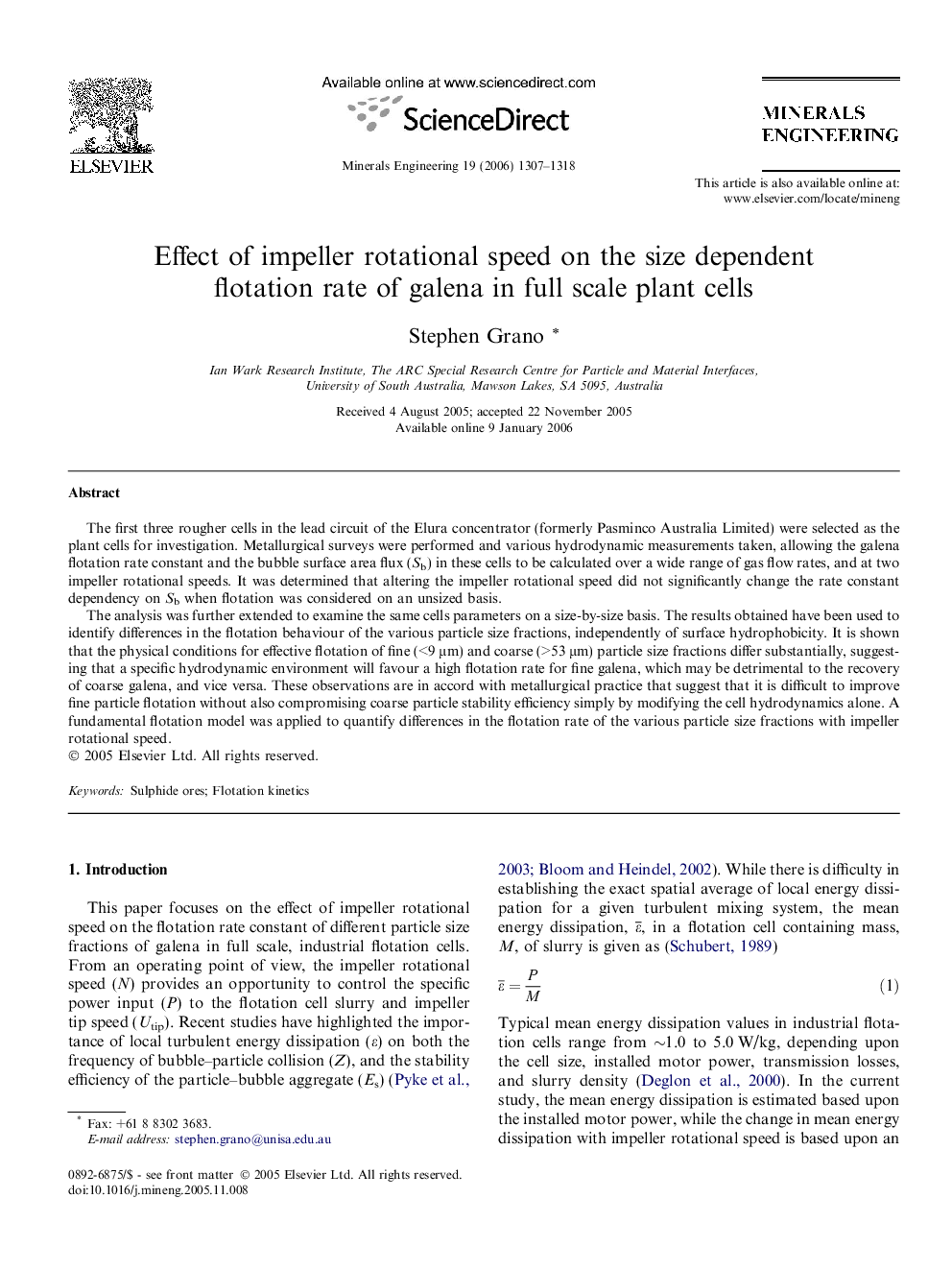| Article ID | Journal | Published Year | Pages | File Type |
|---|---|---|---|---|
| 234686 | Minerals Engineering | 2006 | 12 Pages |
The first three rougher cells in the lead circuit of the Elura concentrator (formerly Pasminco Australia Limited) were selected as the plant cells for investigation. Metallurgical surveys were performed and various hydrodynamic measurements taken, allowing the galena flotation rate constant and the bubble surface area flux (Sb) in these cells to be calculated over a wide range of gas flow rates, and at two impeller rotational speeds. It was determined that altering the impeller rotational speed did not significantly change the rate constant dependency on Sb when flotation was considered on an unsized basis.The analysis was further extended to examine the same cells parameters on a size-by-size basis. The results obtained have been used to identify differences in the flotation behaviour of the various particle size fractions, independently of surface hydrophobicity. It is shown that the physical conditions for effective flotation of fine (<9 μm) and coarse (>53 μm) particle size fractions differ substantially, suggesting that a specific hydrodynamic environment will favour a high flotation rate for fine galena, which may be detrimental to the recovery of coarse galena, and vice versa. These observations are in accord with metallurgical practice that suggest that it is difficult to improve fine particle flotation without also compromising coarse particle stability efficiency simply by modifying the cell hydrodynamics alone. A fundamental flotation model was applied to quantify differences in the flotation rate of the various particle size fractions with impeller rotational speed.
